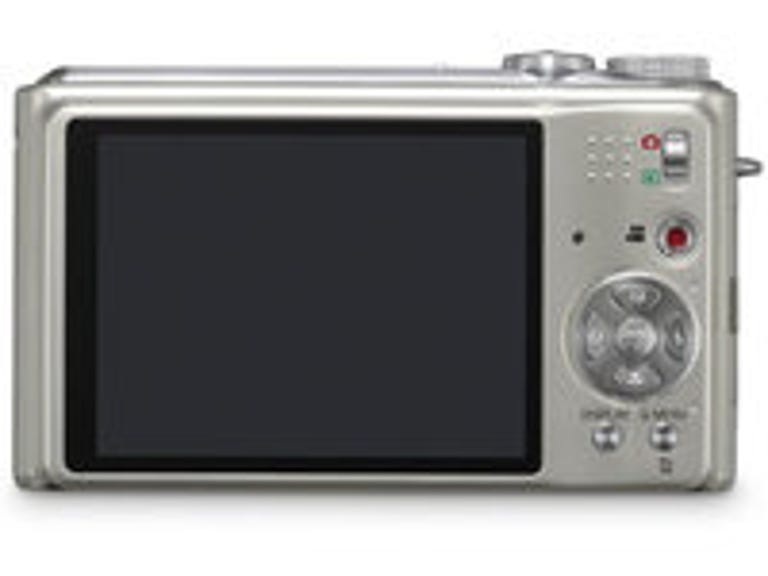 Why You Can Trust CNET
Why You Can Trust CNET Panasonic Lumix DMC-TZ7 review: Panasonic Lumix DMC-TZ7
Even though it's no longer the sole contender in the travel camera category, the TZ7 still stands far above its competitors. If it wasn't for the clunky mode dial and lack of manual controls, we would have no qualms about recommending the TZ7.
It's hard work following in the footsteps of an incredibly successful camera. In the case of the Panasonic Lumix DMC-TZ7, it succeeds the Lumix DMC-TZ15, which struck a chord in the hearts of travellers everywhere looking for a compact camera with an extended zoom reach.
The Good
The Bad
The Bottom Line
Alongside the TZ7 sits the TZ6, a slightly scaled back version of the camera we're reviewing here. The TZ6 does away with HD video recording in AVCHD Lite format, as well as a couple of other features you'll find on the TZ7 model.
Design
From the outset we can tell that Panasonic hasn't wanted to trifle with a winning formula as the TZ7 (at least stylistically) shares a lot in common with the TZ15. It has the same shaped body and lens barrel that slightly protrudes from the front as the TZ15, but a sleek and slimline metal grip on the right-hand side rather than the chunky plastic.

You can't miss the movie recording button. (Credit: Panasonic)
At the back, controls are similar to what we've seen before except for the addition of an instant-on movie record button. You can't miss this one as it's big and red. The rest of the buttons are a glossy silver, which are great for aesthetes but in practical use you might find yourself squinting in bright light to determine what each of them does.
Features
For the most part the TZ7 offers incremental updates to what we found on the TZ15. The zoom has been slightly increased to 12x optical and the megapixel count now sits at 10.1. The lovely 3-inch LCD screen remains the same with 460,000 dots. The most significant change is high-definition video recording in Panasonic's AVCHD Lite format rather than MOV, which featured on the TZ15. HDMI out is included on the side and a stereo microphone on the top of the camera.
The Leica lens is now a strikingly wide 25mm (rather than 28mm on the TZ15) with a maximum aperture of f/3.3 and you can push ISO up to 6400 in the settings. But in terms of settings, you won't get much at all — shooting modes are for point-and-clickers only, with automatic, intelligent auto or scene modes being your options. Manual controls are a big omission from the TZ7, and we don't see why such a fully featured (and fully priced) camera doesn't have a bit of extra oomph in this department.
Performance and image quality
Thanks to its size you don't really expect much speed and agility from this camera. Fortunately, it proves you wrong in most respects, being relatively quick at starting up in 1.5 seconds. Extending the zoom from one extreme to the other takes a good three seconds though.
Be prepared to make this message your new best friend. (Credit: CBSi)
Like we saw on Panasonic's underwater camera, the DMC-FT1, the TZ7 shares a similar mode dial, but this time on the top of the camera rather than at the back. It has a tendency to fall out of position, resulting in a rather annoying message status on the screen telling you it's not in its right place. You can even experience this problem when just carrying it around in your hand, and we hope Panasonic fixes this issue on the next iteration.
As for image quality, just like the TZ15, the TZ7 was capable of delivering some incredibly crisp, sharp images. On bright sunny days the camera could achieve some really nice, natural colours with even detail from all sides of the frame. Lens distortion was also a lot less prominent than we would have thought given the extensive reach of the 12x zoom, with only a small amount of barrel distortion being exhibited at the widest end.
Our sensitivity test showed the TZ7 was fairly good at keeping noise under control, with images at ISO 100 and 200 being virtually noise free. It's not really until about ISO 800 when visible grain starts to become noticeable at a reduced magnification.
Click image to enlarge. Note the grain that starts to appear from ISO 800 and above. (Credit: CBSi)
Now we turn our attention to movie mode on the TZ7. Its implementation is far from perfect — with the zoom during recording being incredibly slow. The camera often had difficulty obtaining focus too when filming, and the first model we tested exhibited a flickering band across the middle of the frame, on both the screen and the final recorded movie. We are waiting to receive another test unit from Panasonic to verify if this is an issue isolated to the camera we reviewed. The actual picture quality is quite nice though, with the camera exhibiting a similar tonal range and sharpness as its still images.
Conclusion
Panasonic appears to have another winner on its hands with the TZ7. It's not perfect by any means — most notably that frustrating mode dial and lack of manual control, for which you'll want to look at something like Canon's SX200 IS, with a similar zoom range and HD video recording. However, if you want a sturdy compact camera that can deliver excellent images, you won't be disappointed in the TZ7.


